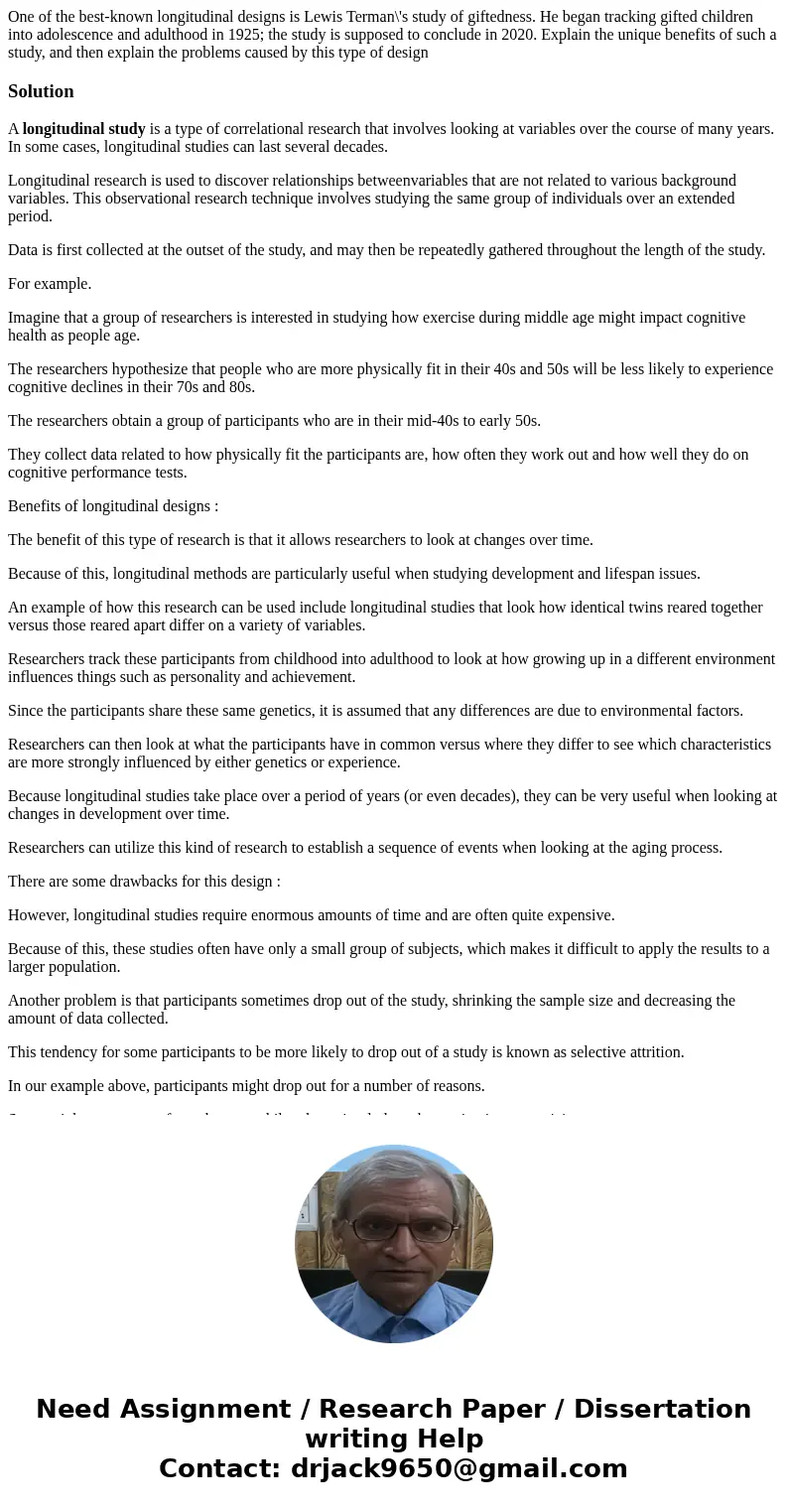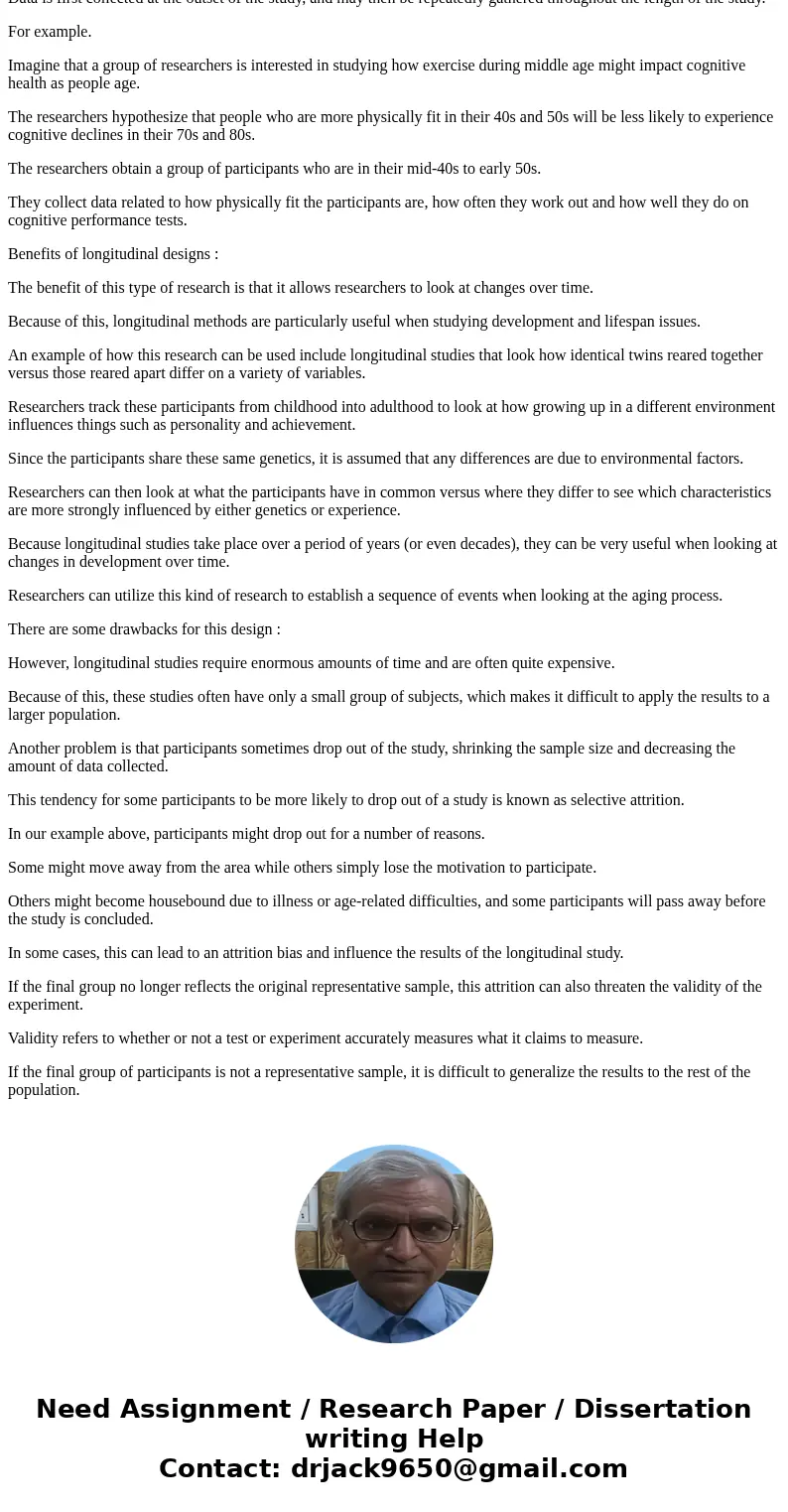One of the bestknown longitudinal designs is Lewis Termans s
One of the best-known longitudinal designs is Lewis Terman\'s study of giftedness. He began tracking gifted children into adolescence and adulthood in 1925; the study is supposed to conclude in 2020. Explain the unique benefits of such a study, and then explain the problems caused by this type of design
Solution
A longitudinal study is a type of correlational research that involves looking at variables over the course of many years. In some cases, longitudinal studies can last several decades.
Longitudinal research is used to discover relationships betweenvariables that are not related to various background variables. This observational research technique involves studying the same group of individuals over an extended period.
Data is first collected at the outset of the study, and may then be repeatedly gathered throughout the length of the study.
For example.
Imagine that a group of researchers is interested in studying how exercise during middle age might impact cognitive health as people age.
The researchers hypothesize that people who are more physically fit in their 40s and 50s will be less likely to experience cognitive declines in their 70s and 80s.
The researchers obtain a group of participants who are in their mid-40s to early 50s.
They collect data related to how physically fit the participants are, how often they work out and how well they do on cognitive performance tests.
Benefits of longitudinal designs :
The benefit of this type of research is that it allows researchers to look at changes over time.
Because of this, longitudinal methods are particularly useful when studying development and lifespan issues.
An example of how this research can be used include longitudinal studies that look how identical twins reared together versus those reared apart differ on a variety of variables.
Researchers track these participants from childhood into adulthood to look at how growing up in a different environment influences things such as personality and achievement.
Since the participants share these same genetics, it is assumed that any differences are due to environmental factors.
Researchers can then look at what the participants have in common versus where they differ to see which characteristics are more strongly influenced by either genetics or experience.
Because longitudinal studies take place over a period of years (or even decades), they can be very useful when looking at changes in development over time.
Researchers can utilize this kind of research to establish a sequence of events when looking at the aging process.
There are some drawbacks for this design :
However, longitudinal studies require enormous amounts of time and are often quite expensive.
Because of this, these studies often have only a small group of subjects, which makes it difficult to apply the results to a larger population.
Another problem is that participants sometimes drop out of the study, shrinking the sample size and decreasing the amount of data collected.
This tendency for some participants to be more likely to drop out of a study is known as selective attrition.
In our example above, participants might drop out for a number of reasons.
Some might move away from the area while others simply lose the motivation to participate.
Others might become housebound due to illness or age-related difficulties, and some participants will pass away before the study is concluded.
In some cases, this can lead to an attrition bias and influence the results of the longitudinal study.
If the final group no longer reflects the original representative sample, this attrition can also threaten the validity of the experiment.
Validity refers to whether or not a test or experiment accurately measures what it claims to measure.
If the final group of participants is not a representative sample, it is difficult to generalize the results to the rest of the population.


 Homework Sourse
Homework Sourse